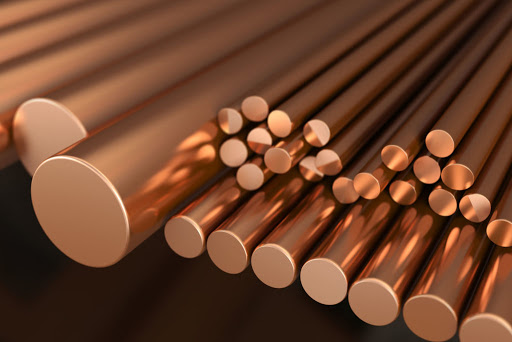How Bad Is It To Look At Welding?
It is very bad to look at welding. When infrared light hits the eye, it can heat up the lens and end up causing cataracts over time.
The reason why it is very bad to look at welding, is that most of the time it makes you feel ill.
Welding also makes you feel under pressure and very uncomfortable in your body and mind.
It is not good to look at welding because it will make you feel sick and very uneasy, because some welding rusts indestructible metals by releasing toxic gases from the metal.
How Safe Is Welding?
Welding is not safe because welders encounter potentially fatal threats every day they report for work.
A real and present hazard is electrocution, fire and explosion, burns, electric shock, visual loss, inhalation of dangerous gases and fumes, and exposed to extreme UV radiation.
Welding has the risk of causing many different types of injuries and it can cause severe burns. Welders can get very sick from the harmful effects of welding gases and fumes.
In addition to this, moisture that builds up in equipment during welding can lead to rusting, which is a common problem for welders. Welders are more likely to develop numerous health problems than the average person with no exposure to welding.
How Strong Is Welding?
Welding is very strong. Welding is stronger than the base metal. Considering your component is correctly planned and performed by a competent welder, your welded joint will be as strong as the underlying materials it is connecting.
An arc is formed between a constantly supplied wire filler metal and the work piece during MIG welding.
How Strong Is MIG Welding?
MIG welding is very strong. Due to the heat and penetration from the filler material.
The main advantage of MIG Welding is that it creates a stronger weld than other types of metal welding. The strength of a MIG weld can be greatly varied by adjusting the number and flow rate of the filler wire, as well as the pressure at which it flows into the joint.
MIG welding is a type of welding that uses an electric arc to create heat that melts and fuses metals together.
The process is often used to weld metals such as aluminum and stainless steel. MIG welding is a popular choice for many welders because it is a versatile and relatively easy to learn welding process.
How Strong Is Stick Welding?
Stick welding is very strong. The weld joint formed by a stick arc has the same properties as the base metal and therefore introduces no detrimental effects.
Because of their continuous nature, stick electrodes can produce larger welds in a single pass than other welding processes.
Stick welding, also known as arc welding, is a type of welding that uses an electric arc to create heat, which then melts the metal to be joined.
The heat from the arc welds the metal together, and the molten metal then cools to create a strong joint.
There are many factors that affect the strength of a stick weld, including the type of metal being welded, the thickness of the metal, the angle of the weld, the amount of heat applied, and the amount of time the weld is allowed to cool.
In general, stick welding is a very strong form of welding, and can be used to create strong joints in a variety of metals.
How Far Away To Watch Welding?
A safe distance is 50 feet. You should not watch welding if it’s within 50 feet.
The welding fumes that are emitted from the torch can be harmful, so you should keep a safe distance from the welder.
Just because you see your boss welding, but only 30 feet away from you, doesn’t mean you should ignore it.
This is bad because the fumes that are being released could fill the whole warehouse and put your health at risk.
How Thick Should A Welding Table Be?
Welding table should at least 3/8 inches thick. The table that you are using to perform the welding should be at least 3/8 inches thick.
If your welders table is not thick enough, your weld won’t be strong.
This is because the more heat that gets into the metal you are welding, the more the metals melt together.
How Hot Is TIG Welding?
TIG welding can be almost as hot as arc welding. TIG welding operates at over 6,000 degrees Fahrenheit.
TIG welding can be used to weld wire or rod. It is a process where the welder applies current to the work piece that it is in. This causes the metal to melt and penetrate through the material being welded.
The theory behind this type of welding is that by heating up the metal at a high temperature, it will make it easier for you to shape the metal, replace damaged tubing and so on.
How Does Cold Welding Works?
Cold welding works by using pressure to join two metals or materials.
When two metals are pressed together, they do not weld. This is mostly because the two materials have an oxide layer or thin barrier on their surfaces that prevents them from diffusing together.
Cold welding is a solid-state welding process in which two clean metal surfaces are brought into intimate contact at room temperature, and then an external force is applied to cause the two surfaces to weld together.
The force may be applied by pressing the two surfaces together with a hand tool, or by using a machine such as a hydraulic press.
The key to cold welding is that the two surfaces must be clean, and they must be in intimate contact with each other. If these conditions are not met, the two surfaces will not weld together.
How Are Welding Rods Made?
Welding rods are made by melting the metal and then pressing the metal into another bar that is shaped just like it.
There are many types of metals that can be used to make welding rod.
The most common welding rod used for cutting is carbon steel or low alloy steel. The high strength of these types of rods makes it easier for the welder to shape the metal and also makes it great for cutting through harder metals.
How Long Do You Have To Go To College For Welding?
You can go to college for welding. A two-year community college welding program normally permits students to graduate with an associate degree.
If you want to make welding a career, it’s best for you to get your GED or diploma in welding first, then go on and make your welding certification.
One of the most important things that you will learn from a certified welding school is how to work with different types of metals. This will give you the chance to explore your options and choose the right one for you.
How Much Does Welding A Muffler Cost?
Muffler cost between $50-$500.The cost of welding a muffler varies, depending on the muffler shop you choose, whether you pay by the hour or flat fee to have your unit welded and what type of material you want your welder.
Many muffler shops charge a flat fee per job, so if they don’t know how much it will cost them to weld your unit, they will find out how much it costs them per hour and then multiply that number by the number of hours it takes them to finish welding your unit.
Is Welding A Good Career?
Yes, welding is a good career. Welding is a great career choice because it gives you the opportunity to work with different types of metals, which means that you have many options of where to go after welding school.
You also won’t have to worry about learning to weld new types of metal if you got your welding certification before welding school.
Welding is a good career choice because it is a skilled trade that is in high demand. Welders can find work in a variety of industries, and with the right training and certification, can earn a good salary.
Is Welding A Trade?
Yes, welding is a short trade program. When someone asks you if welding is a trade, they are asking if welding is a good career choice.
Welding is a skill that anyone can learn, not just welders.
Anybody who has the training to learn how to weld can do it, so it is not considered a trade. It’s just like computer programming or cooking or any other skills that you can learn and practice.
Is Welding Hard On The Body?
Welding is hard on the body. It’s not a walk in the park for sure. You have to be able to work long hours, and then come in on your off days and be able to weld.
You also have to be able to bend down and lift all that steel, as well as keep your back straight enough so you can weld properly.
If you don’t have good enough health or haven’t been taking care of yourself, it is harder to get through a welding day.
What Pressure Should Argon For MIG Welding?
Pressure of argon MIG welding should be between 14-16 psi. When you are using argon as your shielding gas, the pressure should be between 14-16 psi.
As you will be using your torch and electrode in a pulsating motion, it is important that the shielding gas be at a high enough pressure to sustain this operation.
You will also need to make sure that the welding wire is heated to its cutting temperature before the arc is initiated.
To achieve this temperature, you will want to turn down or stop the current flow from your torch on your welder.

